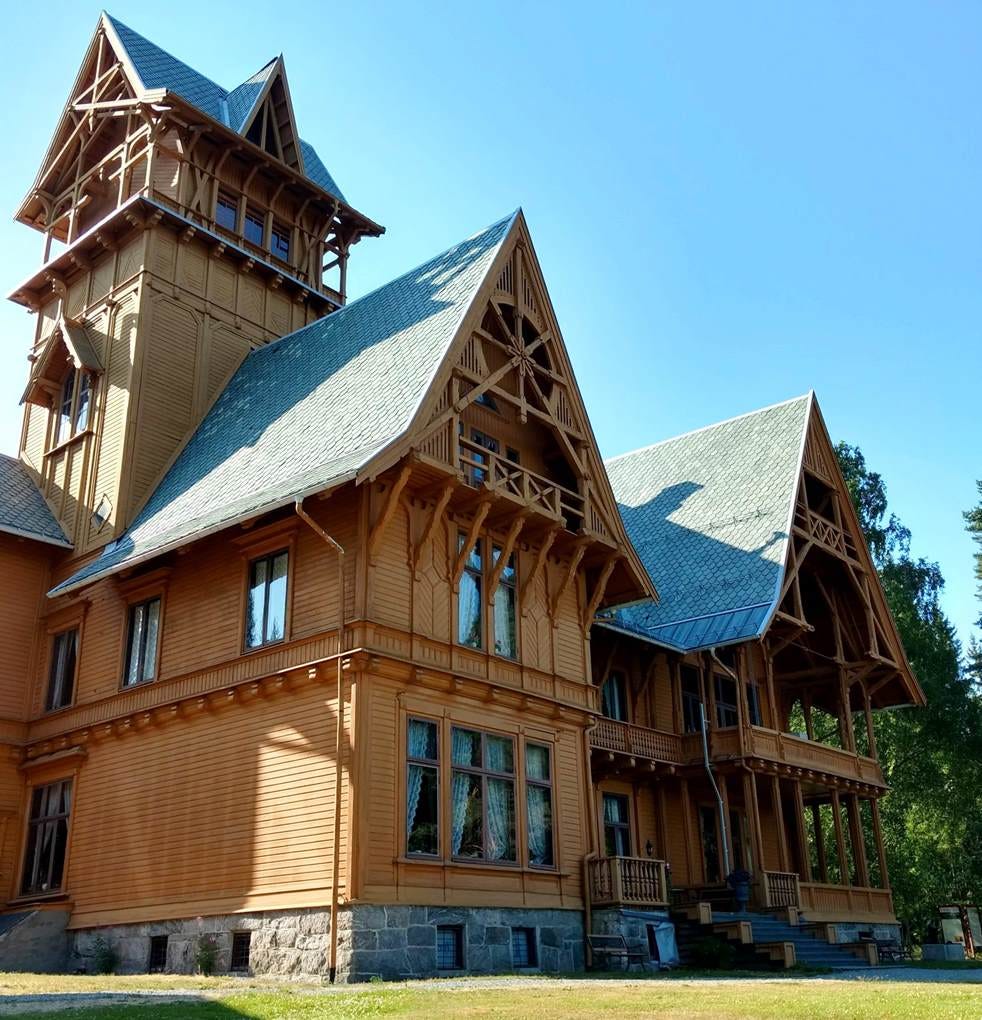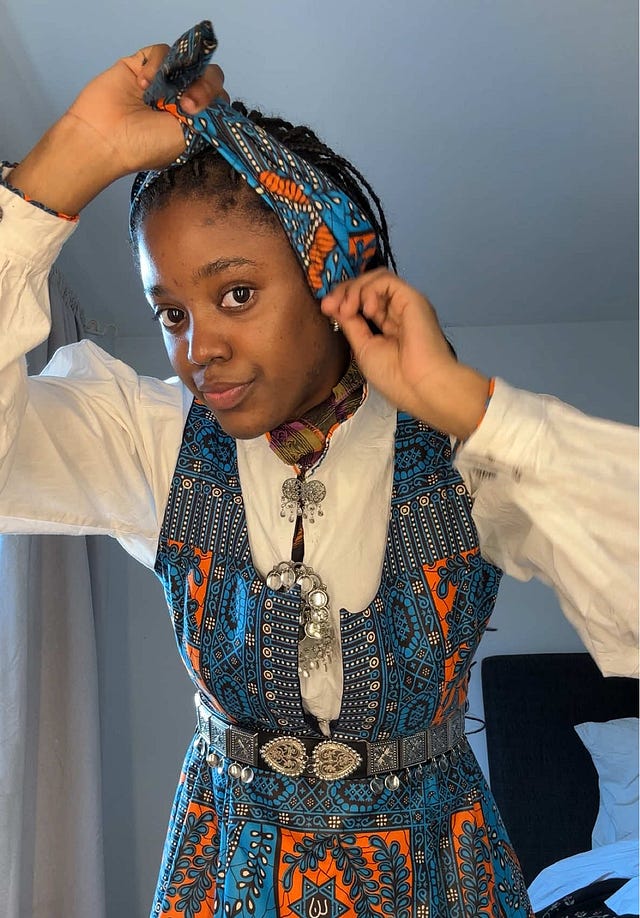Norwegian Nation-Building and the Left
How Norway’s cultural identity was shaped by progressives — not the right-wing nationalists who now claim to defend it
Across the Western world, the political right often claims to be the guardians of national pride. In Norway, that’s no different. From slogans about “Norwegian values” to warnings about immigration and cultural decline, the nationalist right presents itself as the natural defenders of the nation. But that version of history doesn’t hold up.
If you trace Norway’s journey from a cultural periphery under Danish rule to a confident, independent nation, you’ll find that the heavy lifting was done not by conservative elites, but by the left — by poets, folk educators, radicals, and reformers who built a national identity rooted in shared culture and community, not in purity or exclusion.
A Country Built Through Culture and Conflict
When Norway was still in union with Denmark in the 1800s, Danish was the official language, and Norwegian culture was often dismissed as unsophisticated. The shift began with cultural figures like Henrik Wergeland — a liberal poet and public intellectual who pushed for a distinctly Norwegian language and identity. He fought for civil liberties and for the right of Jews to settle in the country, at a time when exclusion was the norm. And this isn’t unique to the left in Norway. Whether you look at Scotland or Catalonia, the movements for national pride are left-wingers.
In Norway, Wergeland’s rival, Johan Sebastian Welhaven, preferred Danish literary standards and saw Wergeland’s project as vulgar and populist. The fault line between them reflected a deeper divide: between those who saw national pride as something to be cultivated inclusively from below, and those who feared what would happen if culture slipped out of elite hands.
That divide persisted as Norway developed its own literary tradition. When Henrik Ibsen, still relatively early in his career, received a state poet’s stipend (“diktergasje”) in 1866, it was controversial. Conservatives questioned the value of subsidizing a man who had criticized societal norms, while liberals saw it as a sign that Norway was ready to support national art as a public good. It was an early example of a broader principle: that culture was something a democratic society could choose to invest in collectively — not something that should live or die by the market.
From Cultural Awakening to Public Institutions
That philosophy continued through the 20th century. Social democratic governments built and defended institutions like NRK (Norwegian Broadcasting), author stipends, local theater houses, and regional museums — not just in the capital, but across the country. This wasn’t only about access; it was about anchoring Norwegian identity in its full diversity, from Sámi joik to nynorsk poetry, from fishing villages in Nordland to urban youth culture in Oslo.
The idea wasn’t that Norway had one culture, but that it had many — and that all deserved support. For instance government run media like NRK is required to create content that caters to a broad set of Norwegian, culture, people and traditions. It does not exist to simply make a quick buck through light-weight shallow entertainment.
This social democratic project was part of a broader ethos sometimes hard to translate, but instantly recognizable to Norwegians: dugnadsånd. The spirit of coming together, helping without expecting profit, contributing to a shared purpose. Whether at a school fundraiser or in response to national disaster, dugnadsånd represents the opposite of rugged individualism. It’s a deeply rooted social value — and it sits uncomfortably beside the political rhetoric of today’s right-wing populists.
What the Modern Right Has Chosen to Forget
Today, right-wing populist party Fremskrittspartiet (Frp) presents itself as the patriotic party. It criticizes immigration, pushes for lower taxes, and often invokes “Norwegian values.” But its track record shows a different relationship to the country it claims to defend.
Frp has long attacked NRK, press subsidies, arts funding, and language policies that support nynorsk (one of the official written forms of Norwegian). It has proposed removing author stipends and dramatically cutting back support for cultural institutions. Even public libraries have been targeted.
This isn’t a party with much interest in nurturing Norwegian culture. It’s a party more focused on dismantling the state’s role in it — and replacing it with market logic and grievance politics. But for a small nations like Norway, if you follow pure market logic, the cheapest is to simply import foreign cultural expressions, whether music, movies or literature. Long term that is a receipt for killing your own identity and culture.
Market logic is not how you preserve a culture. To treat your national identity as product to buy and sell in a market is to cheapen in. Cultural expressions exist in a wide variety of ways. One example is Norwegian building traditions. Every nation develop unique craftsmanship. For instance Norway has an architectural style called Norwegian Swiss Chalet style. The inspiration began with Swiss architecture but was evolved to leverage the strong wood carving traditions in Norway. The idea was that since Norwegians built in wood, the architecture should reflect the unique properties of wood as a building material.

Free market logic means that cheap labour from Eastern Europe got imported to build housing cheaper in Norway. The problem is that as Norwegian builders are replaced, their craftsmanship traditions are lost. Craftsmanship is taught from one generation to the next. Norway has a strong apprenticeship tradition. When Norwegian craftsmen do not get a new young generation of Norwegians to teach their craft to because businesses import cheaper labour from abroad you loose some or your own identity.
Of course a right-winger could put a spin on this story to suggest immigration is bad. But that would be to cherry pick and miss the bigger picture: Whether traditions are replaced because you import workers or import foreign products you can undermine local traditions.
It is important to not read this as advocacy to be a hermit kingdom like North Korea. Norway is a very open economy based on trade and always has been. And we love consuming cultural products from other countries. Foreign culture should not be shut out. Rather this is about making sure important Norwegian traditions can survive. The markets will not ensure that because markets has no loyalty to culture, identity or nations. Markets only care about who offers something at the lowest price.
Frp (populist right anti-immigration party) politicians have frequently made dismissive or insulting remarks about Sámi people and Northern Norwegians — effectively treating large portions of the population as culturally suspect or inferior. That raises the question: if you exclude the North, the Indigenous, the minority languages, and much of the cultural sector, what version of “Norway” is it you actually love?
At times, it seems the Norway they imagine isn’t a country, but a gated community.
And ideologically, Frp often seems more aligned with American-style libertarianism than with traditional Norwegian values. The emphasis on individualism, deregulation, and tax cuts resonates far more with the culture of American talk radio than with Norway’s history of solidarity, “dugnadsånd” (the spirit of working together for common good), and “felleskapet” (community or togetherness).
Two Visions of National Identity
This difference in political instinct reflects two competing ideas of what national pride actually means.
One sees the nation as something shared — a common language and cultural space that’s constantly evolving and that needs care, support, and inclusion. The other sees it mostly as a border — a way to draw lines between “us” and “them,” between insiders and outsiders, between taxpayers and freeloaders.
The Norwegian left, despite its internal tensions, has mostly embraced the first view. It built the platforms that make cultural expression possible in a country as geographically dispersed as Norway. It defended minority languages. It protected Indigenous rights. And it accepted that being proud of your country didn’t require shutting the door behind you.
This TikTok video of Congolese-Norwegian Liv-Karin is an excellent example of the inclusive national pride the left is about. She had taken Norwegian clothing traditions used during celebration of our constitution day on 17th of May and on weddings and made a hybrid outfit that incorporate textile traditions from Congo.

 Tiktok failed to load.
Tiktok failed to load.Enable 3rd party cookies or use another browser
The populist anti-immigration right will typically argue only some people can be Norwegian and everything Norwegian must remain pure. But Liv-Karin did not simply wear Congolese traditional outfit. No, she deliberately made an outfit that combines two traditions into one. Left-wing nationalism is about inclusion, rather than exclusion. It is about what unites us rather than about what divides us.
A Different Kind of Patriotism
This isn’t to say that nationalism is unproblematic, or that every left-wing policy has been perfect. But if we’re talking about who built the cultural and institutional fabric of the nation, the answer isn’t in doubt.
It wasn’t the flag-wavers. It was the schoolteachers, the librarians, the poets, and the parliamentarians who believed that a country could express itself through more than its borders.
So if a party claims to love Norway but wants to gut its culture, mock its minorities, and privatize its public voice — maybe it’s not the love of the country they’re fighting for.
Maybe it’s just the feeling of being in control.





Thank you. This was so interesting! The parallels to Canada’s right wing populists and their relationship to Canadian culture, which shares a lot of the same values and characteristics as Norwegian culture, is striking. Public broadcasting, support for the arts, our National Film Board, effort to be inclusive of our founding cultures and more recent cultures. It is our strength, but the right makes out that we are broken. We are not.
Wonderful article, Erik. Norway was where I lived my first twenty years as an independent adult. (Age 18-38) The challenge for any society is adapting to change, perhaps especially when it comes to integrating immigrants. Norway, often led by social democratic and centrist politicians who understand the importance of balancing economic progress without compromising cultural values, has managed change well.
Ønsker deg en god syttende mai på lørdag! 🇳🇴